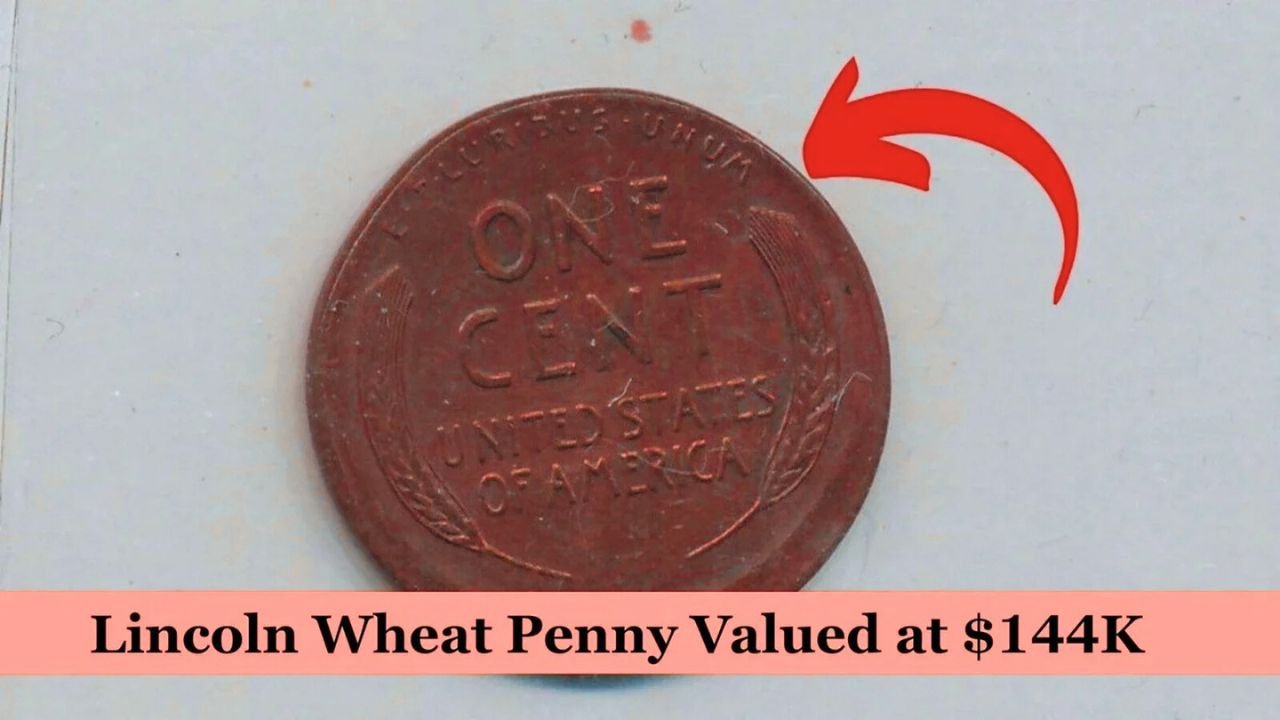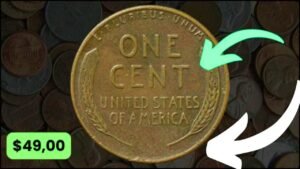Imagine finding a coin in your pocket change that’s suddenly worth six figures. The Lincoln Wheat Penny — a common coin minted from 1909 to 1958 — includes a handful of error varieties so rare they’ve sold for eye-watering sums. The most famous of these is the 1943 bronze penny, a wartime minting oddity that has produced some of the highest auction prices in modern numismatics.
Why the 1943 Bronze Penny Is Legendary
Wartime metal changes created the opportunity
During World War II the U.S. Mint switched penny blanks from copper/bronze to zinc-coated steel to save copper for the war effort. A few pennies, however, were mistakenly struck on copper or bronze planchets — producing coins with the 1943 date but the older metal composition.
Rarity and collector demand
Only a very small number of these “wrong metal” 1943 pennies are known to exist. Their extreme rarity, combined with collector desire for unusual error coins, has pushed prices into six-figure territory for high-grade, authenticated examples.
Other High-Value Lincoln Wheat Pennies to Know
- 1909-S VDB — first year of the series with designer initials; highly prized in top condition.
- 1955 Doubled Die — obvious and dramatic doubling on the obverse; a classic collector favorite.
- 1914-D and other scarce mintmarks — low mintage and survival rates make certain years very desirable.
How to Spot a Potentially Valuable Wheat Penny
Quick home checks
- Magnet test: Steel 1943 pennies are magnetic; a non-magnetic 1943 may be copper/bronze.
- Weight: Copper/bronze cents weigh noticeably more than steel cents.
- Color and tone: Copper coins have a reddish/brown tone; steel coins are silver-gray.
- Sharp details: Higher value coins often show crisp strike details and minimal wear.
When to call an expert
If a penny passes the simple checks and looks unusual, stop using it as change. Have it examined by a reputable coin dealer or submit it to a professional grading service for authentication before any sale or appraisal.
Practical Steps If You Think You’ve Found One
- Handle the coin by its edges and avoid cleaning it.
- Do basic tests (magnet, visual inspection, weight).
- Photograph the coin clearly (both sides).
- Visit a trusted local coin dealer or numismatic club for an initial opinion.
- If promising, get formal grading/authentication from a recognized service.
FAQs
Q1: Can a $144,000 penny really still be in circulation?
A1: It’s highly unlikely but not impossible. Most such coins have been removed by collectors, but a very small number could conceivably remain undiscovered.
Q2: What makes the 1943 penny so valuable?
A2: The combination of historical context (wartime metal change), production error (wrong metal), extreme rarity, and collector demand drives its value.
Q3: Should I clean a coin I think is valuable?
A3: No. Cleaning can drastically reduce a coin’s value. Always leave it as found and show it to an expert.
Q4: How can I get a coin authenticated?
A4: Submit it to a reputable grading and authentication service; they will evaluate, grade, and encapsulate the coin.
Q5: Are all Wheat Pennies worth money?
A5: No. Most Wheat Pennies are worth only face value or a little more in circulated condition. Only specific dates, mintmarks, or error varieties command high prices.
Final Thoughts — What Makes a Penny More Than Spare Change
The story of the 1943 bronze Lincoln Wheat Penny is a reminder that everyday objects can hold extraordinary value — financially and historically. If you ever stumble upon an odd 1943 penny that doesn’t stick to a magnet and looks copper, treat it with care, get it checked, and enjoy the thrill of potentially uncovering a tiny piece of history. Want a short headline or social-media teaser version for your site? I can create that next.




